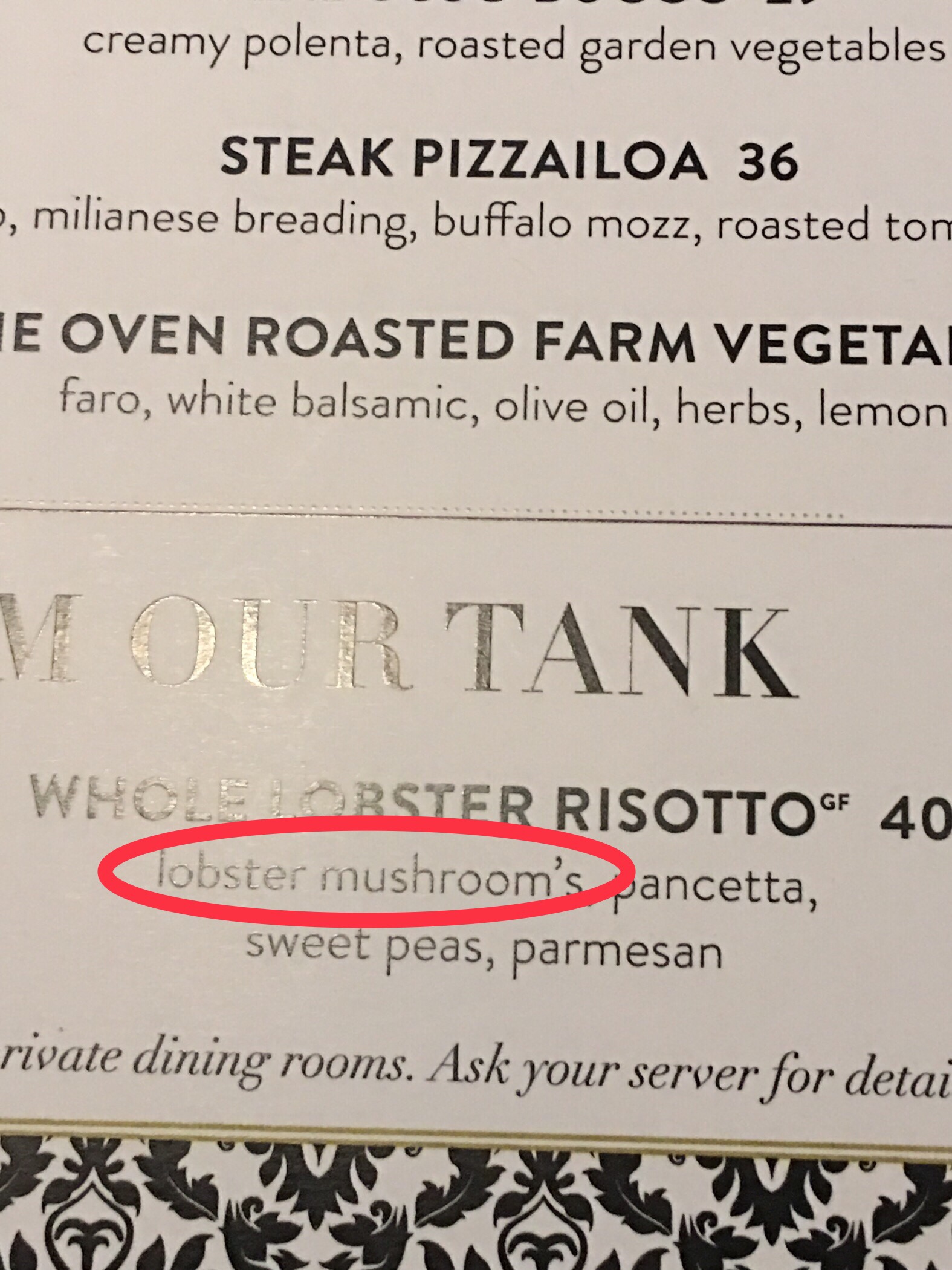I found this on a trip. Again, this shows the use of apostrophes to show pluralization. Apostrophes are used for contractions and to show possession NOT to make a word plural.
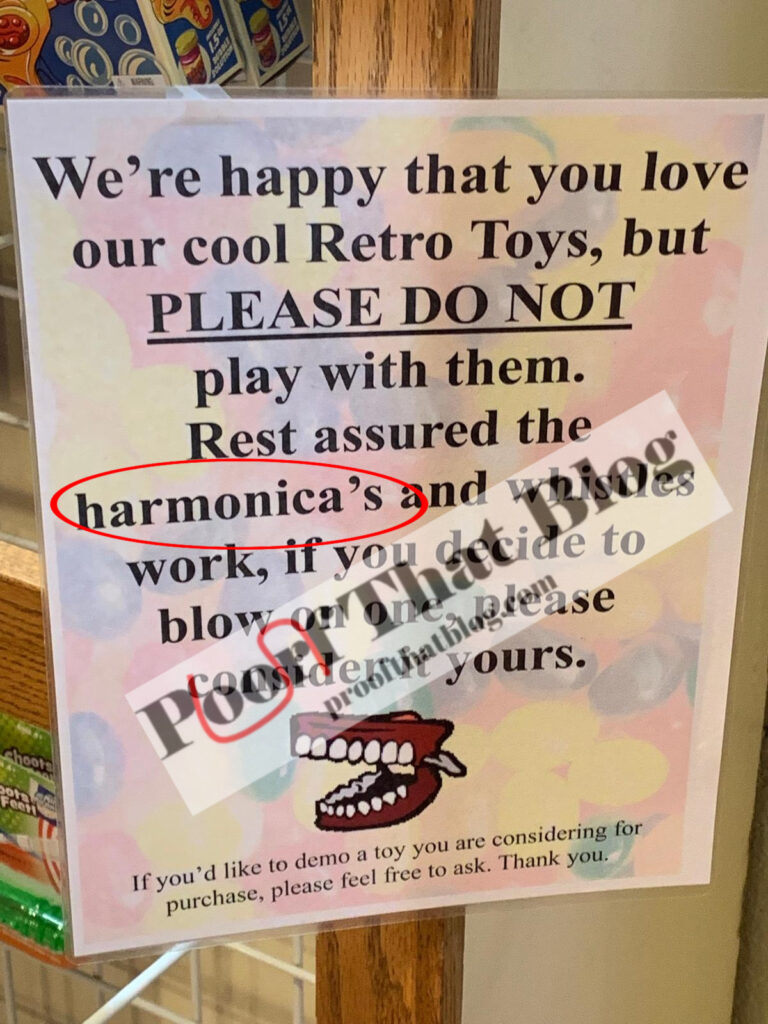
I found this on a trip. Again, this shows the use of apostrophes to show pluralization. Apostrophes are used for contractions and to show possession NOT to make a word plural.

I took this photo on the way to work the other day.
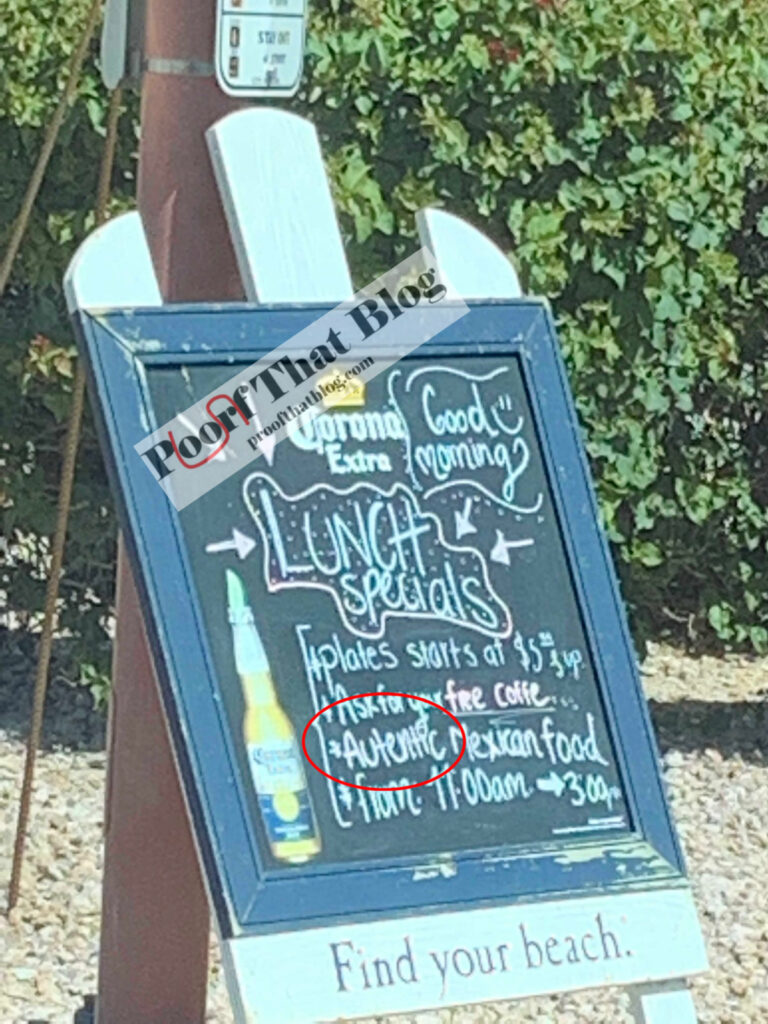
A friend sent this to me. I’m not sure why they have the apostrophe “s” on cookie and “shortbread” should be one word when you’re talking about a shortbread cookie.

This was a picture I took of a Christmas gift for my youngest granddaughter. It highlights the improper use of an apostrophe. What exactly belongs to Barbie? Or are you talking about more than one Barbie? Perhaps you’re talking about 20 Barbies? If this had said 20 Barbies and Barbie’s accessories, then the apostrophe in the second “Barbie” would be correct because you’re talking about accessories belonging to Barbie. As it is here, the apostrophe is incorrect because you’re talking about 20 Barbies so it is plural NOT possessive.
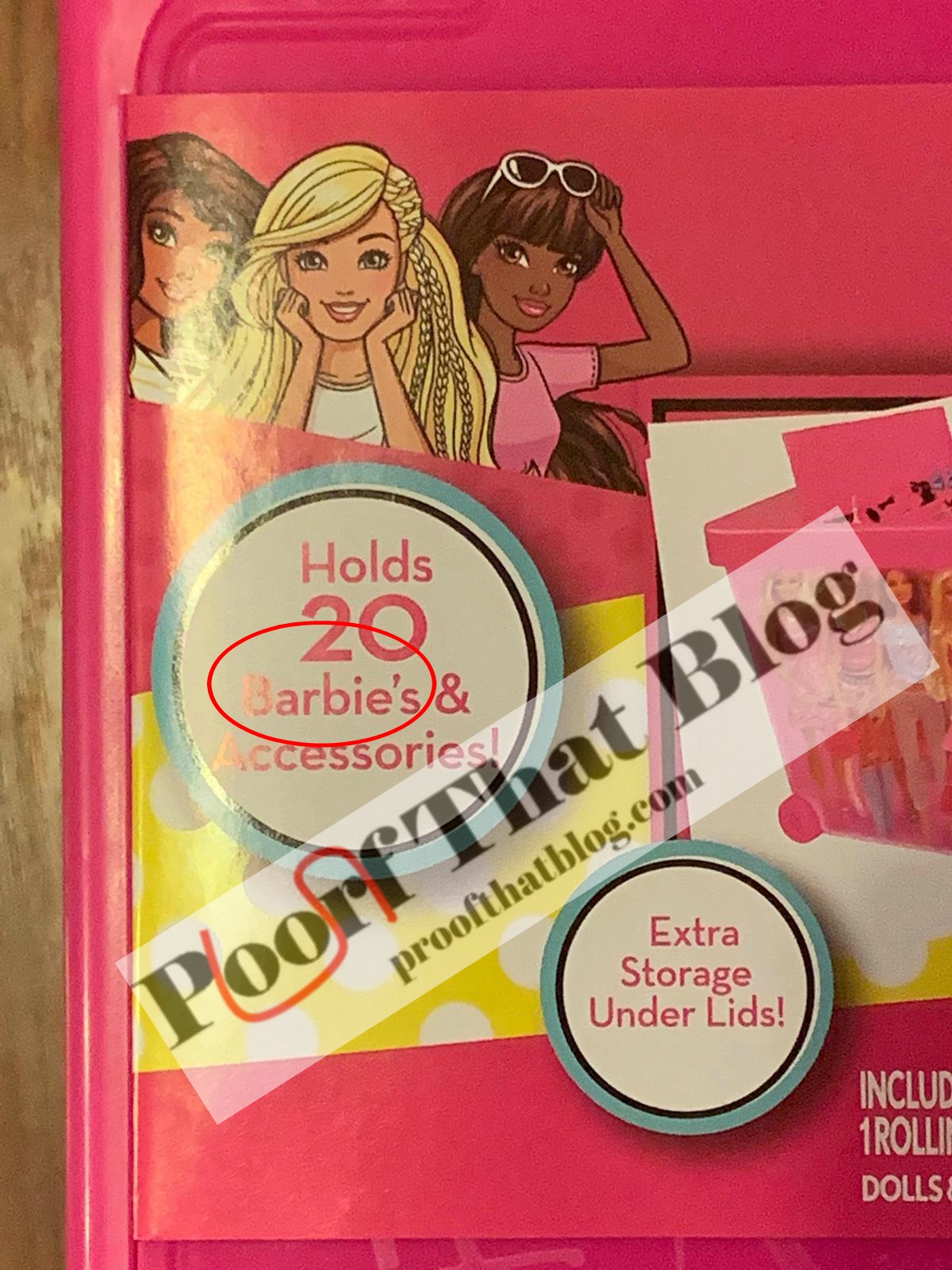
As you may know, rogue apostrophes are my pet peeve. I took this picture myself on a recent shopping trip. The apostrophe is not necessary to make that word plural.
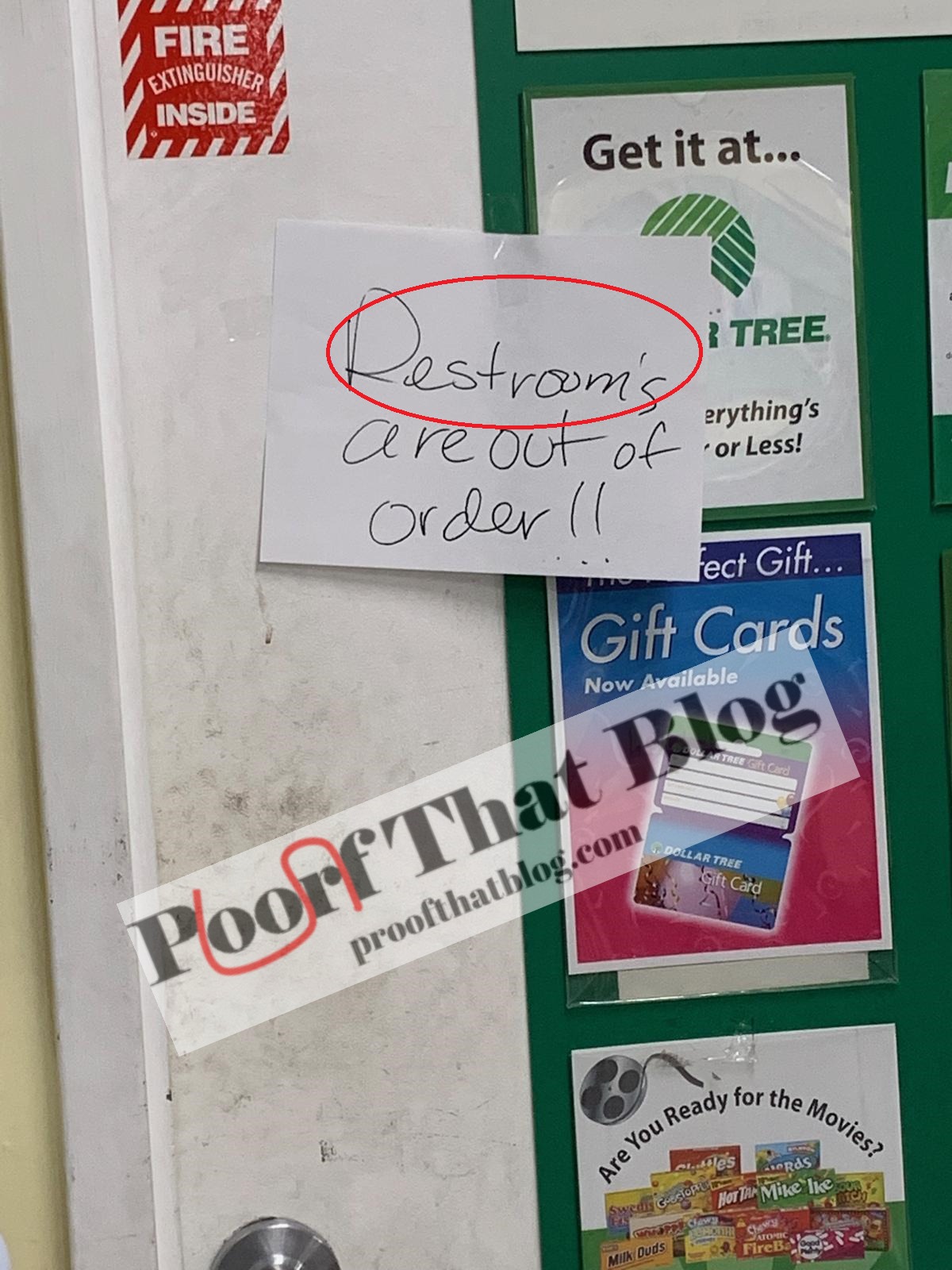
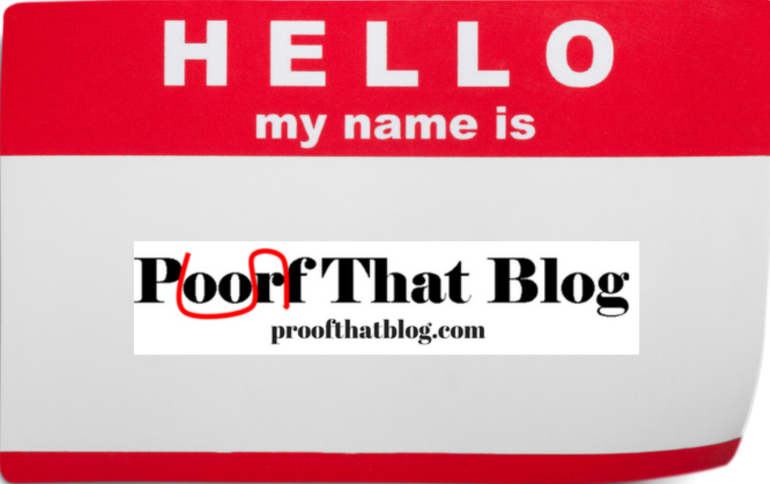 Since some people will be sending out holiday cards and/or letters soon (if they haven’t already), I thought it was time to rerun a blog post about making last names plural and possessive. If you are sending cards out for your whole family, please pay attention to this.
Since some people will be sending out holiday cards and/or letters soon (if they haven’t already), I thought it was time to rerun a blog post about making last names plural and possessive. If you are sending cards out for your whole family, please pay attention to this.
A reader asked me to address possessives with a proper name. I mentioned it in an article early on (see Apostrophail!), but we will delve into it here.
The first rule–the most important thing to remember when working with surnames (a person’s last name)–is do not change a person’s name. You can’t add an apostrophe before an “s” when the surname ends in “s.” For instance, do not make the name “Andrews” possessive by putting the apostrophe between the “w” and the “s.” That is changing the spelling of Andrews. A person’s name is the most personal thing they have. Don’t mess that up! So here are some tips for making surnames plural and possessive.
To make most surnames plural, you add an “s.”
That means more than one Smith went to the party. Where the surname ends in s, x, ch, sh, or z, you should add es to make the name plural.
However, if adding es makes the name hard to pronounce, just use the s.
As for possessives, to make most surnames possessive, add an apostrophe and an “s.”
For these surnames that are plural and possessive, make them plural by adding an “s” and then add an apostrophe to make them possessive.
Where surnames end in “s,” to make them possessive, pronounce the word. If you say the extra “s,” you add apostrophe and “s.”
You would pronounce it “Joneses,” so you add the apostrophe and “s.” Where the surname ends in “s” and making it plural adds an extra syllable that makes it awkward to pronounce, add only the apostrophe.
You would not pronounce it “Andrewses,” so you only add the apostrophe. Where you are talking about a surname that ends in “s” and you want it plural and possessive, make it plural first and then follow the rules on making it possessive.
You make Jones plural by adding “es” because it ends in “s,” but adding apostrophe and “s” after that would make it difficult to pronounce (Joneseses) so you just add the apostrophe.
Again, the main thing to remember is not to change the basic spelling of a person’s name. Start with their name spelled correctly, and then figure out how to make it plural and/or possessive.
Hopefully this is helpful. Don’t upset a person by misspelling their name. Possessives and plurals aren’t difficult if you think about the base word you are trying to change.
This was in a restaurant ad that I found on their homepage. One more time, you don’t make words plural by adding an apostrophe.

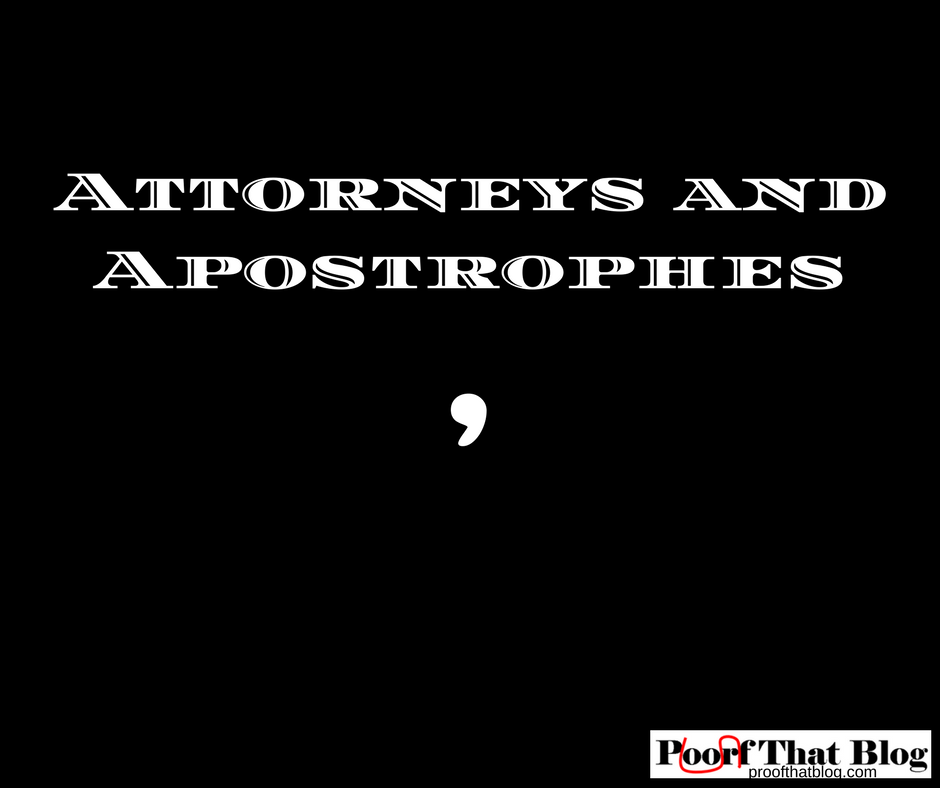 I found this article and thought it was interesting. Incorrect use of apostrophes is probably my biggest pet peeve. It isn’t really hard. If you need to show possession or show that letters are missing, use an apostrophe. Otherwise, for the most part, do not use an apostrophe. There are, of course, exceptions, but you need to learn the difference because I’m pretty sure that you don’t want your attorney’s work to be the topic of a FindLaw article.
I found this article and thought it was interesting. Incorrect use of apostrophes is probably my biggest pet peeve. It isn’t really hard. If you need to show possession or show that letters are missing, use an apostrophe. Otherwise, for the most part, do not use an apostrophe. There are, of course, exceptions, but you need to learn the difference because I’m pretty sure that you don’t want your attorney’s work to be the topic of a FindLaw article.
Though she managed to graduate from law school, Anissa Bluebaum apparently never managed to master elementary school grammar.
Or at least that’s what her fellow attorney had to say when he responded to a complaint in a civil lawsuit filed by Bluebaum.
Her egregious use of apostrophes made it impossible to tell who she was referring to and when.
Anissa Bluebaum is representing Alison Peck (a teacher who was busted for sleeping with her students) in a lawsuit against her former probation officer, Rebecca Martin, reports the Springfield News-Leader.
When Martin’s attorney, Richard Crites, received the complaint, he was a bit baffled. But Crites soldiered on, responding on behalf of his client.
With 8 pages of questions.
Apparently, the lawsuit was filed against Martin and her brother, but because Bluebaum had rendered the complaint incoherent by misusing both “defendants” and “defendant’s,” Crites was unable to tell whether statements were referring to one or both parties.
He also requested that Bluebaum respond to his request in paragraph form.
Did Bluebaum write her pleading like a stream-of-consciousness text message, too?
As you may know, glaring grammatical errors can be disastrous to your case (and make you look a bit ridiculous). So the next time you’re confronted with multiple parties to which you need to attribute actions or statements, keep the following in mind:
If you’re still unsure, ask around–you don’t want to end up like Anissa Bluebaum.
http://blogs.findlaw.com/greedy_associates/2011/06/attorney-objects-to-motions-use-of-apostrophes-possessives.html
While everyone has probably seen this one already, my son sent this to me and I thought it was interesting. Not only is “Union” spelled wrong, requiring them to reprint all of the invitations to the State of the Union Address, but I think that the Gallery is set up for more than one Visitor, so it should be the Visitors’ Gallery. I checked the U.S. Capitol Visitor Center website to try to figure out what they call it, and I find reference to “the Visitor Galleries,” which would be correct as it is a name for that area of the Capitol, and “the House and Senate Galleries,” but I find no reference to the “Visitor’s Gallery.” I’m thinking they didn’t fix that error when they reprinted the invitations because it isn’t an obvious error–to most people.
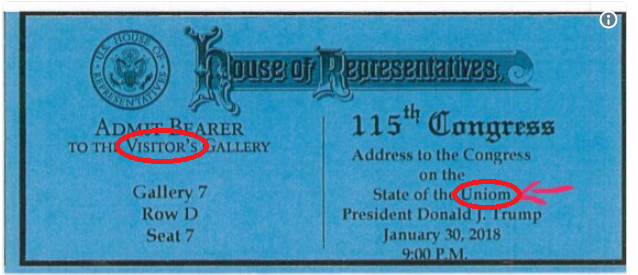
I caught this one on a recent trip to Norfolk for our conference. Yet another misuse of an apostrophe. Apostrophes do not always make a word plural!
